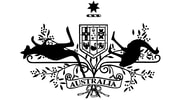|
Kangaroo populations crashing Kangaroos have been nominated as threatened species in NSW after government data has revealed kangaroo numbers have fallen by up to 90% in NSW harvest zones in the last ten years alone. “Plagues of kangaroos don’t exist and exploding populations are biologically impossible” said the paper’s author, ecologist Ray Mjadwesch. “These myths are successfully perpetuated by the kangaroo industry, and repeated by uncritical media and ordinary Australians. “Kangaroo populations grow around 10% per year and decline during drought. “On average an Eastern Grey doe will replace herself only once in her lifetime. “Yet the government data claims population growths of up to over 300% and even increasing during drought,” he said. “The data also shows alarming downward trends, with less than 2% kangaroos remaining in some NSW harvest zones. “Most Australians don’t realise that whole wild mobs are being shot every night to put on their plate, feed to their pets, or export overseas as a novelty food. “It is of deep concern I can drive for hours in rural and western NSW and not see a single kangaroo, dead or alive,” Mr Mjadwesch said. “200 years of threats to the kangaroos has taken its toll. “In 1839 Charles Darwin expressed concern at the rapid decline of kangaroo saying “It may be long before these animals are altogether exterminated, but their doom is fixed”. “Regulators must review their policies and the status of kangaroos, and afford protection for Australia’s most recognisable icon,” he said. The discussion paper is available at www.kangaroosatrisk.net |
Before sending release to media: cut & paste media text into the body of your email. Attach the pdf. Insert headline into subject. Then send.
| ||
- home
- forward: Dr Johannes Bauer
- 1. introduction
- 2. biology & population ecology
- 3. counting kangaroos
- 4. how many kangaroos?
- 5. threats
- 6. kangaroo myths & legends
- 7. what went wrong?
- risk analysis urgently required
- endnote
- references
- appendix 1. kangaroo management case study
- appendix 2. boorowa vegetation maps
- 1st supplementary submission
- 2nd supplementary submission
- 3rd supplementary submission
- home
- forward: Dr Johannes Bauer
- 1. introduction
- 2. biology & population ecology
- 3. counting kangaroos
- 4. how many kangaroos?
- 5. threats
- 6. kangaroo myths & legends
- 7. what went wrong?
- risk analysis urgently required
- endnote
- references
- appendix 1. kangaroo management case study
- appendix 2. boorowa vegetation maps
- 1st supplementary submission
- 2nd supplementary submission
- 3rd supplementary submission



